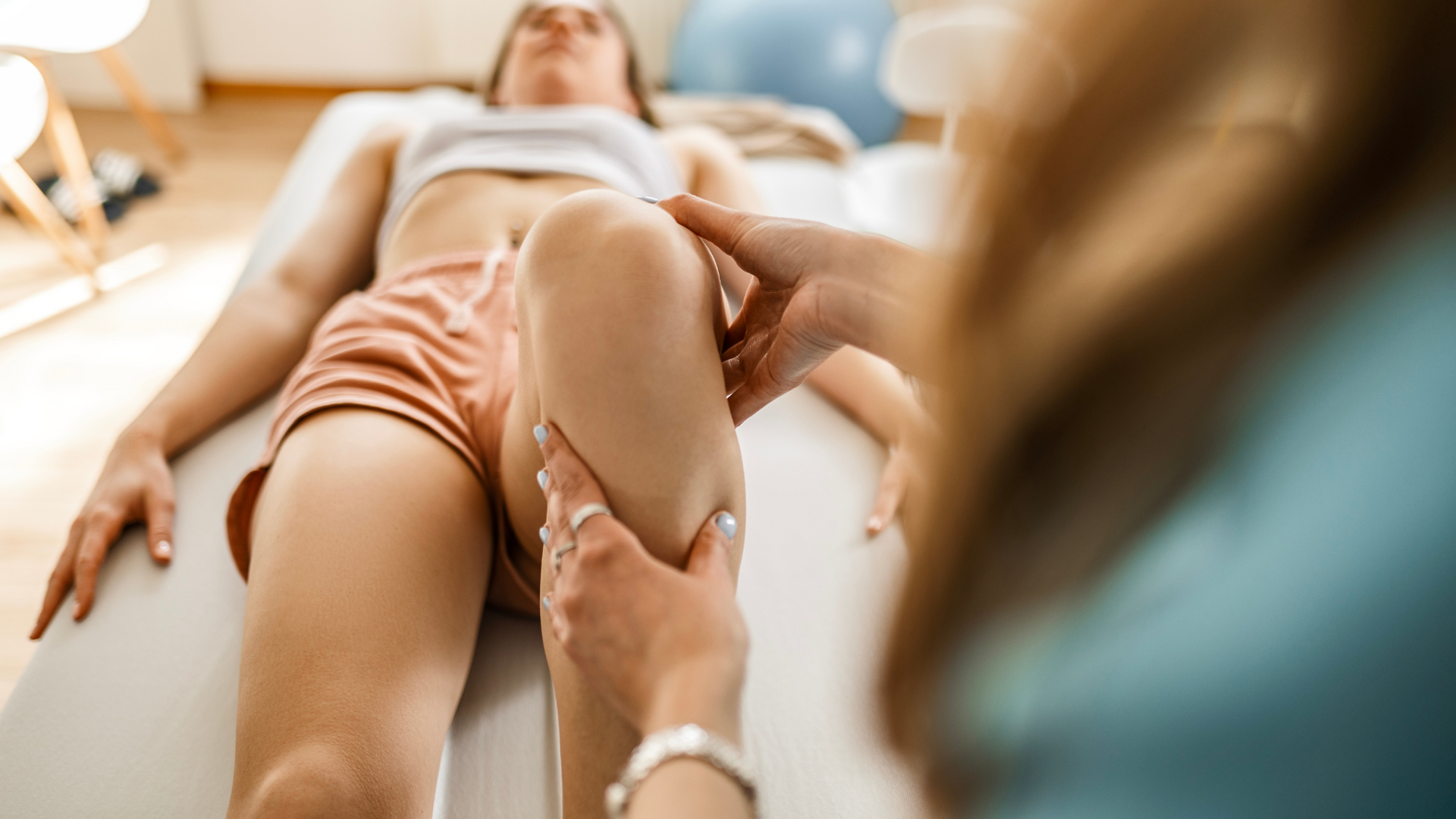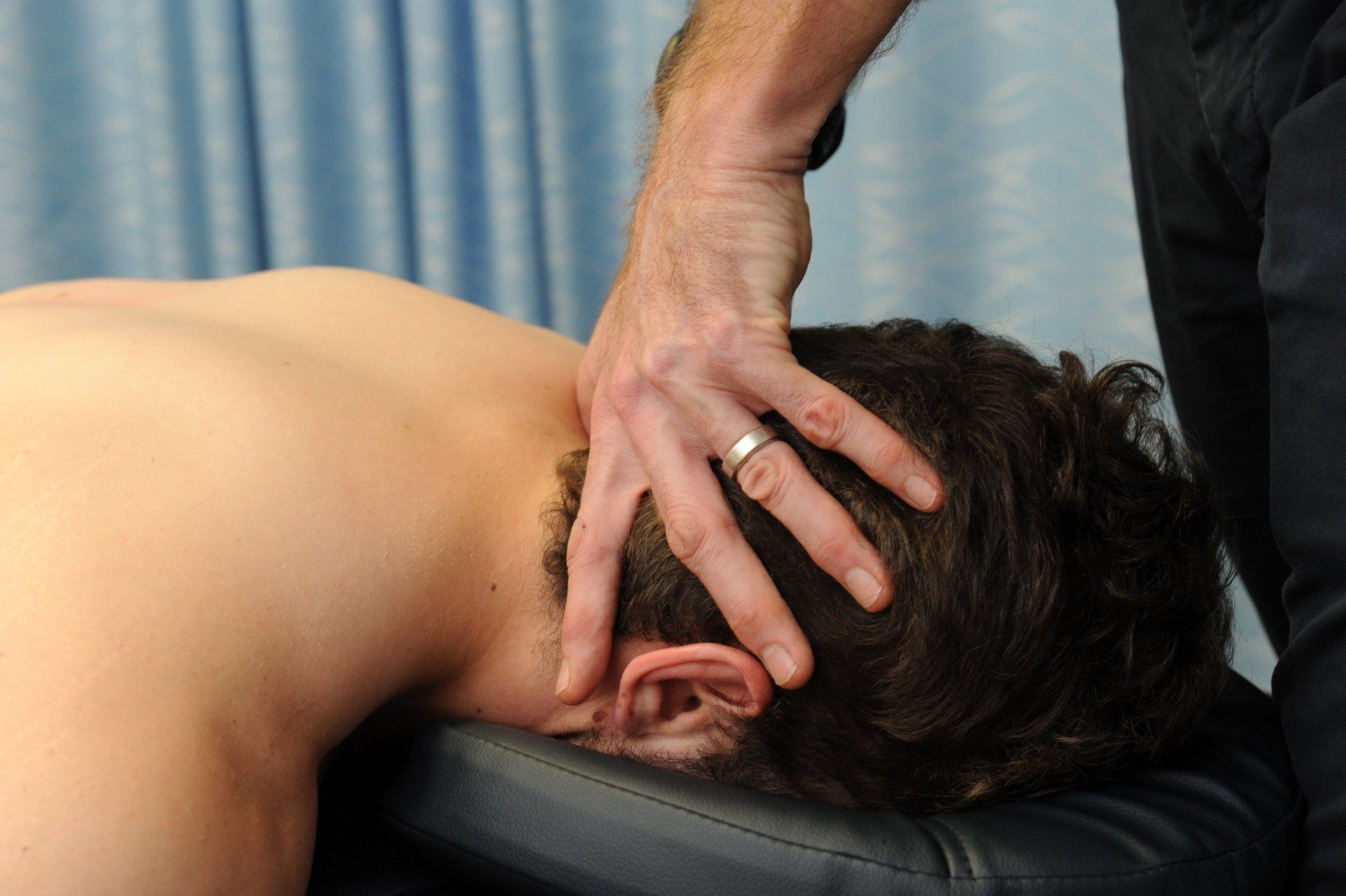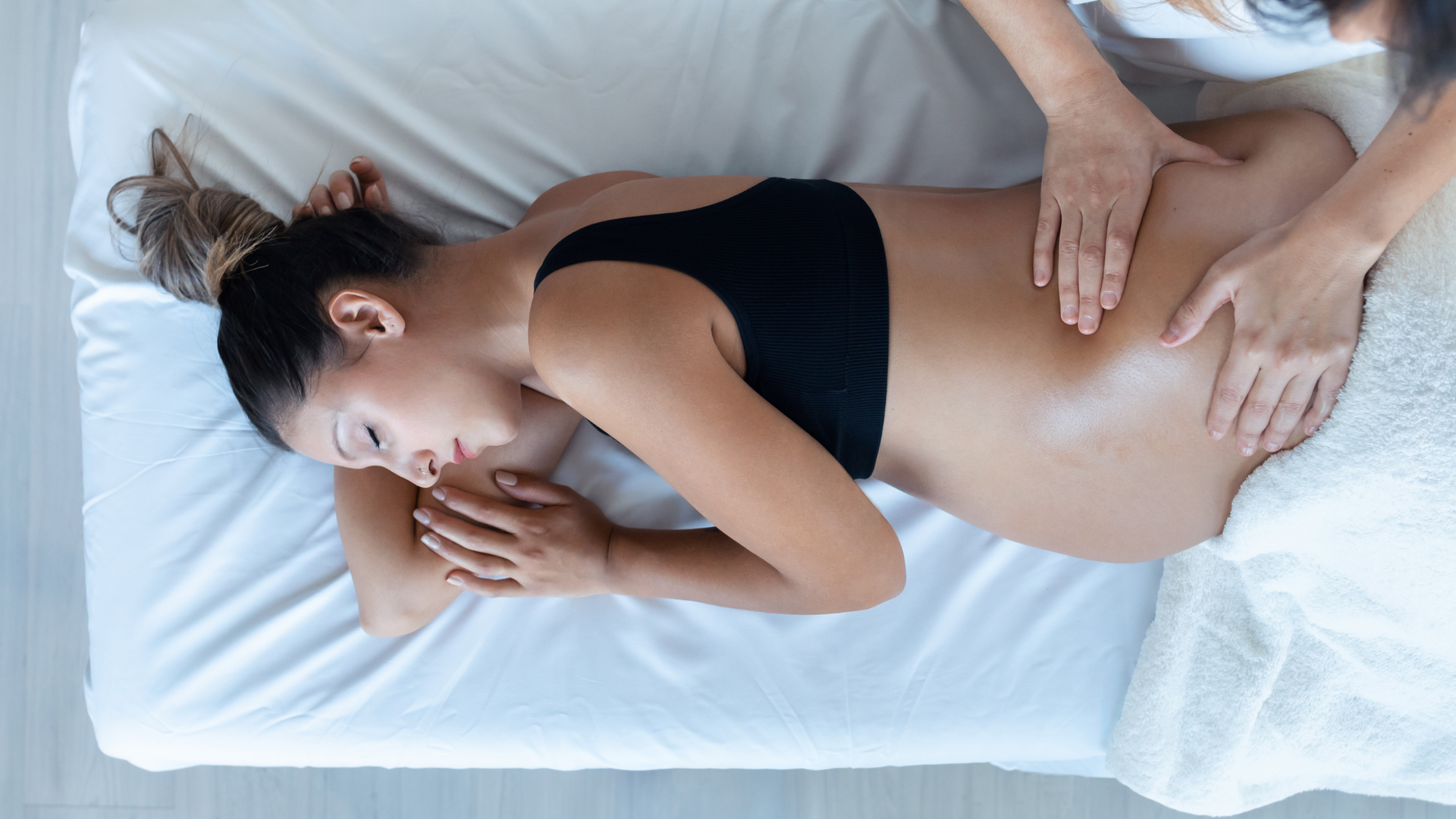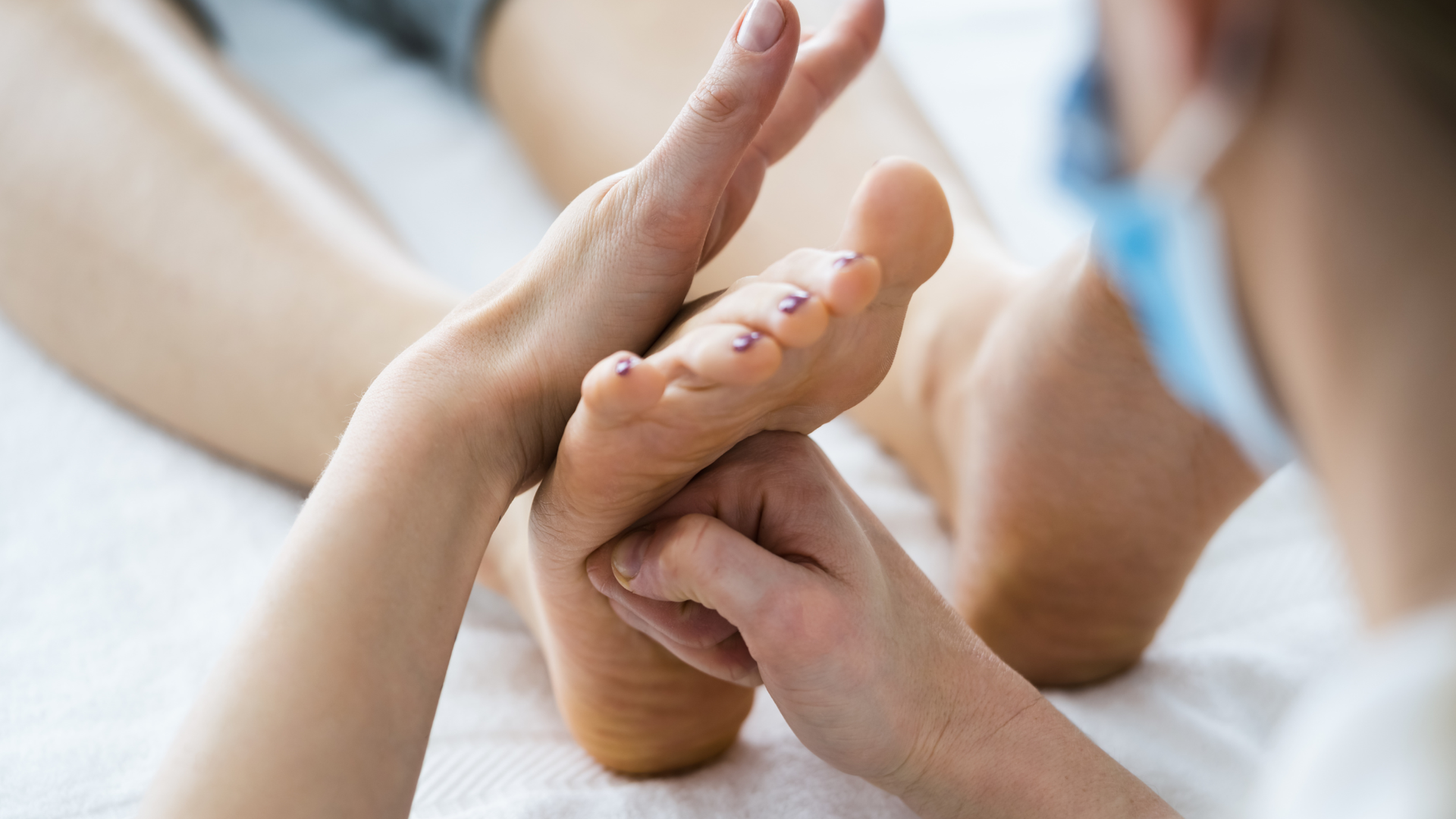Cervicogenic Headache
Neck pain and a headache? The two could be linked.
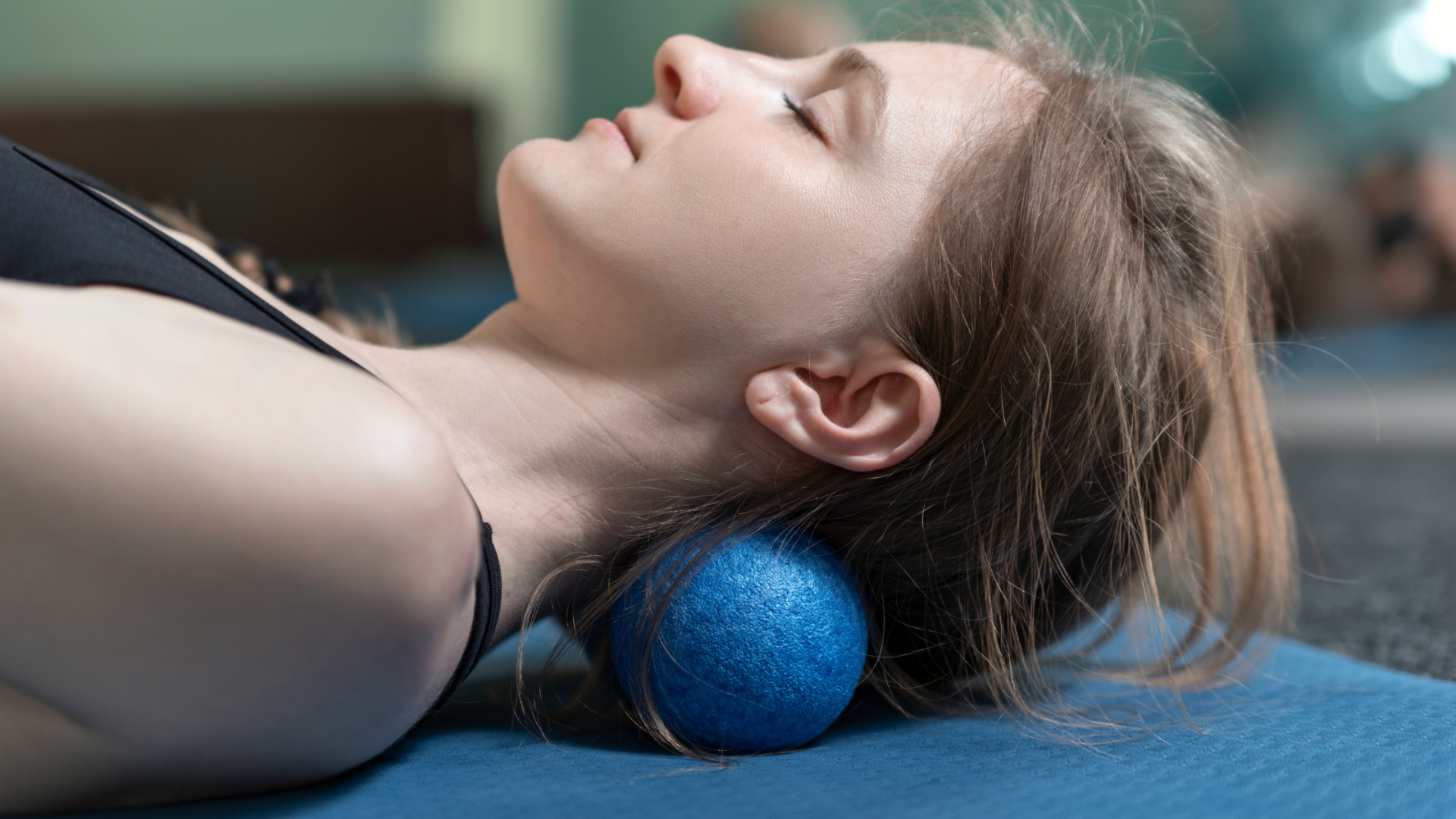
Cervicogenic (ser-vy-co-jen-ic) headache is an identified form of headache that originates in the neck and refers pain to one or more regions of the head and/or face. Implicated in 1-4% of headache presentations, cervicogenic headache is more common in 30-44 year-olds and is characterised by pain generally on one side of the head/face, diffuse shoulder pain and reduced neck movement.
Anatomy 101
To understand how we get a headache from the neck, we need to broach the topic of referred pain and try to understand at least a little about the structure of the neck, how information is processed, and how the bones (vertebra), joints, and muscles share nerve pathways with the head.
The neck is comprised of 7 cervical vertebrae, and it is the first 3, C1-3, that are generally implicated in cervicogenic headache.
There is a spinal nerve root at each level, which essentially is a relay between the nerve receptors in the periphery (things like our skin, joints, muscles, and organs) and the brain, which is tasked with working out what all this information means. On route to the brain, the nerve signal passes through part of the spinal cord called the trigeminocervical (tri-gem-e-no-ser-vy-cal) nucleus. This nucleus also receives input from the skin and muscles of the head and face (via the Trigeminal nerve), so it’s kind of like a melting pot for all this information coming in. The nucleus then passes info on to the brain, which has the task of putting the incoming signals into context and producing an output. Confused? Click here to see a diagram of this.
In the case of cervicogenic headache, a problem in the neck, be it muscle tightness or joint degeneration, sends lots of signals to the trigeminocervical nucleus via the nerve root. This increased signal generation can upregulate the trigeminocervical nucleus making it more sensitive to all inputs, including those coming in from the head and face. In a sensitised state, it then bombards the brain with signals. The brain cannot accurately decipher whether the information is coming from the neck or via the trigeminal nerve and perceives it as symptoms, often pain, in the head and/or face.
Causes
Now that we understand the link between the neck and the head, we can start to explore some of the causes of cervicogenic headache. A key thing to understand here is that the neck is the driver of the headache. In a cervicogenic headache, there will always be an underlying problem in the neck or the muscles around the neck. Some of the known causes include:
- Trigger points. These are small, focal, nodular bundles located within a taut band of skeletal muscle that, when compressed, are painful and refer pain in distinct patterns. They can develop from a range of causes, including stress, poor posture, and activity such as cycling and swimming. Trigger points located in the trapezius and sternocleidomastoid muscles have been implicated in cervicogenic headache.
- Facet joints changes. These small joints located on the side of each cervical vertebrae are subject to acute injury (eg. whiplash) and to degenerative changes as we age. This can affect local muscles, ligaments, and joint surfaces. Facet joint changes at the C1-3 levels are recognised as potential causes of cervicogenic headaches.
There are plenty of other tissues that can contribute to cervicogenic headache though, so best to get it assessed properly.
Assessment
The first step to treating cervicogenic headache is determining the cause of symptoms. Excluding other causes of headache is a key part of this, so a full musculoskeletal assessment should be undertaken.
The International Headache Society has established diagnostic criteria for cervicogenic headaches.
These guidelines were last updated in 2018 and are used to guide the diagnosis of cervicogenic headache. Common presenting symptoms include neck pain, restricted neck mobility, occiput and frontal headache, and at times shoulder pain. Symptoms can be improved with rest and aggravated with movement of the neck especially neck extension, rotation, and lateral flexion.
In some instances, your physiotherapist or doctor may refer for x-ray to determine the influence of joint degeneration on individual symptoms. And if your headache is a tension headache or migraine, then you’re best seeing your doctor and getting appropriate medication prescribed.
Treatment
Physiotherapists bring a wholistic approach to managing cervicogenic headache and are skilled in using a variety of techniques that have good evidence for their effectiveness. Manual therapy, dry needling, soft tissue massage techniques and therapeutic exercise all play a role in treating and managing cervicogenic headache, helping to restore joint mobility, reduce active trigger points, improve muscle function, and correct posture and biomechanics.
As symptoms resolve, exercise plays an important role in maintaining neck mobility and reducing muscle tightness. Stretches, strengthening and self-management techniques can assist with improving muscle endurance, posture and desensitizing neural inputs to the spinal cord and brain.
A usual course of care for cervicogenic headache will take between 6-12 weeks.
This can seem daunting to many patients, but it allows time to make sustainable changes to people’s lives including reducing pain, addressing causative factors and building resilience. Your physiotherapist will provide you with a treatment plan that outlines the stages of physio intervention, the treatment recommended for your presentation, and expected milestones along the way.
Do you have neck pain and a headache? Give us a call.
We are part of a well-connected network of physiotherapists, massage therapists, doctors and surgeons and can treat and manage cervicogenic headache that is personalised, goal-oriented and comprehensive.
Call now on 08 8945 3799 or book online.
Resources:
- Cardoso R, Seixas A, Rodrigues S, Moreira-Silva I, Ventura N, Azevedo J and Monsignori F (2022). The effectiveness of sustained natural apohyseal glide on flexion rotation test, pain intensity, and functionality in subjects with cervicogenic headache: A systematic review of randomized trials. Archives of Physiotherapy, 12-20, https://doi.org/10.1186/s40945-022-00144-3
- Parikh, S.S., Salazar, T., Taborda, R. (2022). Neck Pain: Whiplash and Cervicogenic Headache. In: Mostoufi, S.A., George, T.K., Tria Jr., A.J. (eds) Clinical Guide to Musculoskeletal Medicine. Springer, Cham. https://doi.org/10.1007/978-3-030-92042-5_8
- Nassery, A., Schuster, N.M. (2020). Cervicogenic Headache. In: Mao, J. (eds) Spine Pain Care. Springer, Cham. https://doi.org/10.1007/978-3-030-27447-4_15
- https://www.physio-pedia.com/Cervicogenic_Headache
- https://choose.physio/your-body/neck/neck-related-cervicogenic-headache
